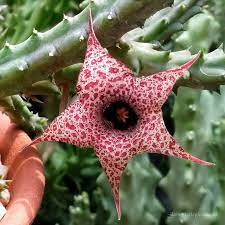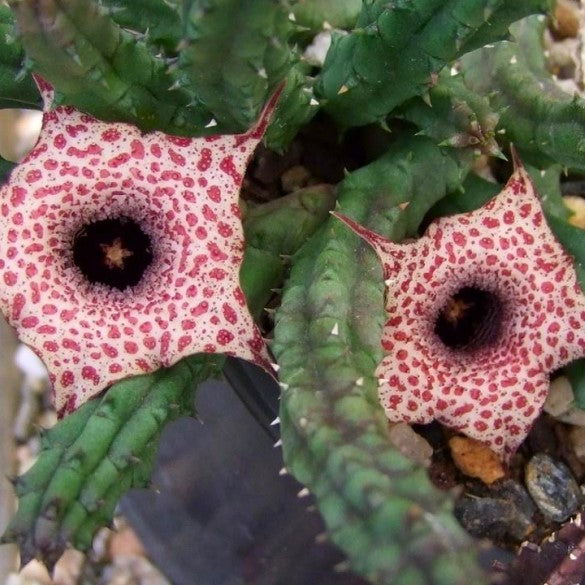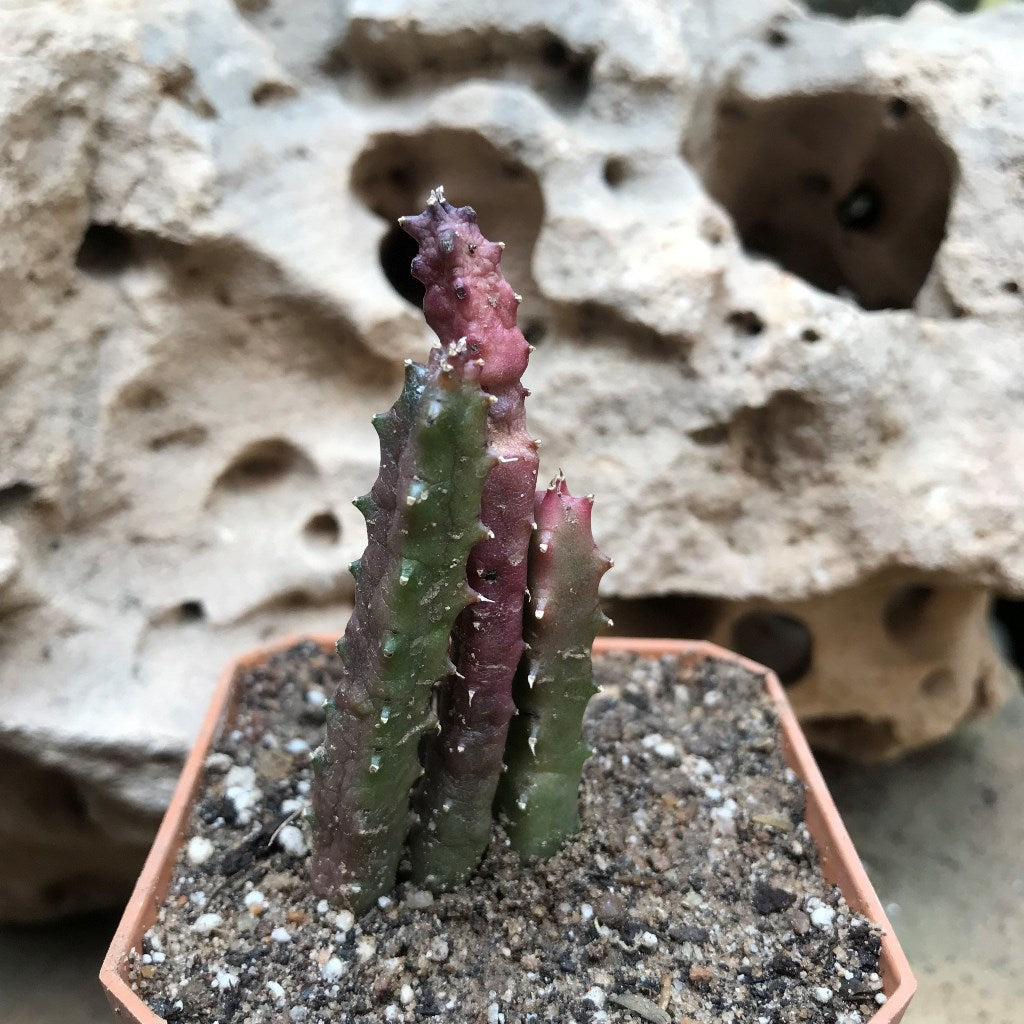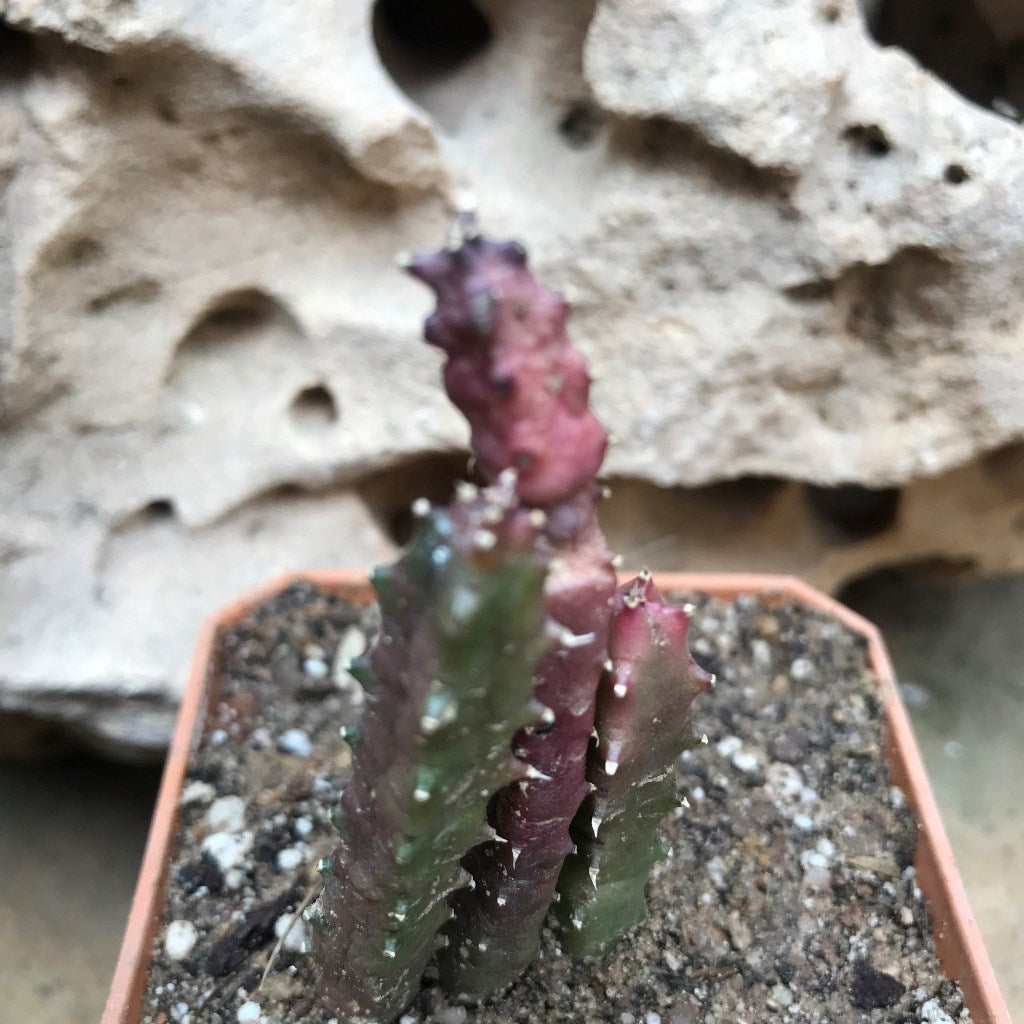Porcupine Huernia
Family
Asclepiadaceae
Origin
Zimbabwe
Description
Huernia hislopii (commonly known as 'dragon flower') is a tufted, leafless succulent, consisting of a number of five-angled stems, occasionally forming large clumps. These stems are green during the rains but usually turn reddish brown in the dry winter months. The ridges on the stems form fleshy, thorn-like points, which serve as "leaves". Stems are clustered, erect or ascending, 5 (or more under cultivation) cm long and 8-10 mm thick, with prominently 5-(occasianally up to-7) angular. Ribs strongly toothed along the margins with tubercles 3 mm long. Facing upwards, rarely prostrate on peduncle to 2.5 cm long. Sepepals 6-10 long 2 mm wide at base.
Corolla campanulate 4-6 cm in diameter, outside cream-coloured, inside cream-coloured, stippled and mottled with red-brown with 5 acuminate lobes about 22 mm long, 18 mm wide, ome-times more or less caudate, and conspicuous secondary lobes to 6 mm long between them, cream with dull maroon spots, papillose, with a tube to 1.6 mm long and inflated below to 11 mm in diameter, marked with transverse red-brown lines, mouth abruptly reflexed.
Environment
Huernias prefer bright light or partial shade. In nature, they grow underneath shrubs or other plants. Too much sun causes stems to develop protective reddish or purple pigmentation and can actually scald the stems. Too little light leads to weak, thin growth with decreased flower production.These plants grow best between 10 and 27 . Protect them from freezing weather.
Huernias require a potting mix with excellent drainage. A succulent plant mix of 50 percent perlite, 25 percent vermicompost and 25 percent sand helps prevent rotting and over watering. Roots experience die back in cool-season dormancy, so plants grow best in shallow containers that allow the soil to dry out quickly. Using clay pots further helps soil from staying too wet. An underlayment of coarse gravel below the soil mix also improves drainage. In climates with damp cool summers, a layer of gravel between the plant and the soil mix also helps prevent the stems from staying too moist. Outdoor plantings do well in raised beds.
Landscape Use
Suitable for Container, Rock Garden & Xeriscaping
























